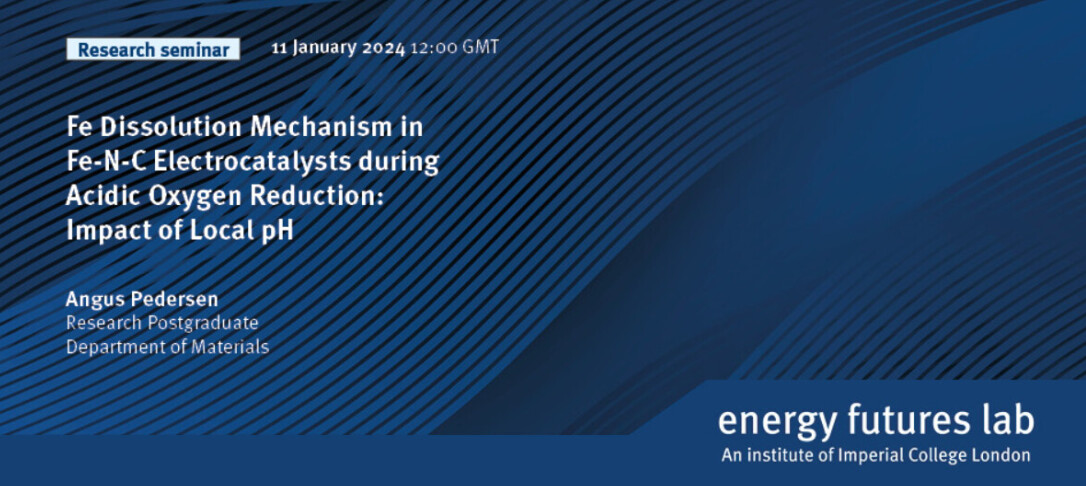
Fe Dissolution Mechanism in Fe-N-C Electrrocatalysts during Acidic Oxygen Reduction: Impact of Local pH
Atomic Fe in N-doped C (Fe-N-C) provide the most promising non-precious metal O2 reduction activity at the cathode of proton exchange membrane fuel cells, althought they suffer from limited durability. Fe demetallation has been suggested as the primary initial degradation mechanism. However, the fate of Fe under different operating conditions varies. Here, we monitor operando Fe dissolution of a highly porous and >50% FeNx electrochemical utilization Fe-N-C catalyst in 0.1 M HClO4, under O2 and Ar at different temperatures, in both flow cell and gas diffusion electrode (GDE) coupled to inductively coupled plasma mass spectrometry (ICP-MS). By combining these results with pre- and post-mortem analyses, we demonstrate that in the absence of oxygen, Fe cations diffuse away within the liquid electrolyte. Conversely, in the presence of O2 at ≥-15 mA cm-2, the Fe cations reprecipitate as Fe-oxides (Fe2O3 being the majority species). We supported our conclusions with a microkinetic model, revealing that the local pH in the catalyst layer predominantly accounts for the observed trend. Even at a moderate current density of -15 mA cm-2geo and under O2 at 25oC, a significant H+ consumption and therefore pH increase (pH = 8-9) within the bulk Fe-N-C layer facilitates precipitation of Fe cations. This work provides a unified view on the Fe degradation mechanism for a model Fe-N-C in both high-throughput flow cell and practical operating GDE conditions, underscoring the crucial role of local pH in regulating the stability of the active sites.
Biography:
Angus Pedersen received his M.Eng. in Chemical Engineering with industrial placement from the University of Bath in 2019. He is currently pursuing a Ph.D. under the supervision of Prof. Maria-Magdalena Titirici and Dr. Ifan E. L. Stephens at Imperial College London and Prof. Dan J. L. Brett and Dr Rhodri Jervis at University College London, through the Advanced Characterisation of Materials Centre of Doctoral Training. Angus’ research focuses on synthesizing and characterizing single and dual metal atom electrocatalysts for oxygen reduction in low temperature hydrogen fuel cells.
About Energy Futures Lab
Energy Futures Lab is one of seven Global Institutes at Imperial College London. The institute was established to address global energy challenges by identifying and leading new opportunities to serve industry, government and society at large through high quality research, evidence and advocacy for positive change. The institute aims to promote energy innovation and advance systemic solutions for a sustainable energy future by bringing together the science, engineering and policy expertise at Imperial and fostering collaboration with a wide variety of external partners.


